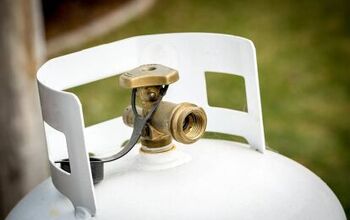Dishwasher Leaving A Gritty Residue? (We Have A Fix)

It’s your dishwasher’s job to clean the leftover food off your dishes. A dishwasher cleans, sanitizes, and sometimes has enough heat to dry your dishes. What your dishwasher shouldn’t do is leave behind a gritty residue.
When your dishwasher is leaving a gritty residue, it’s because your dishwasher filter and the dishwasher base are both dirty. Over time, the grit will stick to the filter and on the base. Anything that cannot be broken down will catch in the filter, causing grit to get deposited back through the dishwasher.
Do You Need Appliance Repair Services?
Get free, zero-commitment quotes from pro contractors near you.

Causes of Gritty Residue in Your Dishwasher
There may be gritty residue left behind on your dishes for many reasons. But, there are also many ways to fix these issues.
Dirty Dishwasher Filter
Even though dishwashers clean your dishes, they are not self-cleaning. Each wash cycle causes food and other gunk to accumulate in your filter. Once the filter is full, new food particles have nowhere to go but back on to dishes.
Simply remove your dishwasher filter and let it soak in hot, soapy water. After an hour, give it a good scrubbing and rinse it. Return the filter to your dishwasher, good as new.
To prevent this from happening again, clean your filter more regularly. Most dishwashers can go three to six months without a clean. However, be sure to check your dishwasher’s manual, as some require cleaning every few weeks.
Dirty Dishwasher Bottom
A dirty dishwasher bottom often accompanies a dirty dishwasher filter. Grime can accumulate at the bottom of the dishwasher and can easily move around during a wash cycle. This is most likely caused by overflow from your filter.
After you’ve cleaned your filter, make sure to do the same to the dishwasher itself. The easiest way is to simply wipe down the inside before the next wash cycle.
For a deeper clean, place a dishwasher-safe cup of white vinegar on the dishwasher’s top rack. With the remainder of the dishwasher empty, run a heavy, hot water cycle. This should wash away grime buildup and help with any lingering odors.
To remove caked-on grease and stains, spread one cup of baking soda on the bottom of the dishwasher. Allow it to sit overnight and then run a short, hot water cycle the next morning. This will remove grime and any bad smells.
Burnt Leftover Food
It’s no secret that no dishwasher is perfect. Modern dishwashers can usually remove food from dishes that haven’t been pre-rinsed. However, many older models cannot handle food that hasn’t been scraped away yet.
When the dishwasher can’t get rid of caked-on food, the food burns in the high heat of drying cycles. This can create a leftover gritty residue on dishes. This can also be caused by packing too many dishes into one load.
If you suspect the grime is a result of leftover food, try not to overload your dishwasher. Leave spaces between your dishes so the cycles can really do their job. If you have an older model dishwasher, try pre-rinsing your dishes. This can help to remove the really stubborn, stuck-on food. If pre-rinsing isn’t your style, it’s time to upgrade to a newer model dishwasher to save you the extra effort.
Blocked Dishwasher Spray Arms
If your dishwasher spray arms are blocked, this can cause gritty residue buildup on your dishes. Spray arms can become blocked with food particles or hard water, preventing them from working correctly. You should clean the spray arms to remedy this issue.
Stray dishes can also block your dishwasher’s spray arms. Make sure nothing is falling through the bottom rack’s holes. Large utensils and pan handles are typical culprits of falling through and stopping the arms from spinning.
The spray arms are located below the top and bottom racks in your dishwasher. Depending on your model, you can remove them by spinning the arms counterclockwise or with a screwdriver. Once removed, soak the spray arms in white vinegar. The vinegar will loosen food and other grime from the spray arms. Use some wire to remove buildup from the spray holes.
Return the spray arms to the dishwasher once cleaned. Run a cycle without any dishes to rinse the spray arms thoroughly.
Low Water Temperature
The water entering your dishwasher should be between 120 and 150 degrees. If it is higher than 150, the water will decompose the detergent too quickly. If it is less than 120 degrees, your dishes won’t be adequately cleaned.
Make sure that your dishwasher is connected to the hot, not cold, water line. If it is attached to the cold water line, the dishwasher hasn’t been able to wash anything with hot water. This is likely the cause of leftover grit and grime, as cold water doesn’t clean as well as hot.
Note: Be sure to check your dishwasher’s manual to ensure it is equipped to work with the hot water line. Some dishwashers take in cold water and heat it themselves.
If there isn’t hot water in your dishwasher, you may likely be having hot water problems elsewhere. Adjust your water heater. GE Appliances suggests running the hot water in your sink before starting your dishwasher. This should ensure that the water entering your dishwasher is hot on arrival.
Short Wash Cycles
There may be grime left on your dishes if you’re using dishwasher cycles that are too short. Very full loads should run on a long and hot cycle. If your dishwasher is stocked with dishes, don’t run it on a quick cycle.
A quick cycle on your dishwasher can save water and is generally more efficient than a long cycle. However, you should only use a quick cycle on dishwashers that are not full. A quick cycle is also not as likely to remove caked-on grime as a longer cycle.
Be sure only to use your quick cycle on smaller loads of dishes. Use the longer dishwasher cycle on a full load of dishes to ensure there’ll be no grime left on dishes.
Low-Quality Dishwasher Detergent
If you’re using low-quality dishwashing detergent, this can leave gritty residue on your dishes. A low-quality dishwashing detergent simply won’t do its job as a cleaner. It may not even dissolve completely during a cycle, leaving food and soap grime on dishes.
If you’re still using liquid dishwasher detergent, switch it out for powder or pods. Liquid dishwasher detergent can get stuck on various parts of the dishwasher. This makes it harder for the dishwasher to clean.
Make sure to put the proper amount of detergent in your dishwasher. If you’re using powder, too much of it won’t properly dissolve during a wash cycle. The same goes for liquid detergent.
If your detergent is of decent quality, there may be an issue with the dispenser door. If something is blocking your detergent dispenser door, it cannot fully open during a wash cycle. This prevents all detergent from being utilized during the cycle, which can lead to grime on dishes.
You can ensure the dispenser door opens by stacking larger items away from it. Keep pan handles and trays in the back, away from the door.
Do You Need Appliance Repair Services?
Get free, zero-commitment quotes from pro contractors near you.

Related Questions
Why is my glassware cloudy after a dishwasher cycle?
If your glasses are cloudy after a dishwasher cycle, this is probably caused by hard water in your dishwasher. Hard water doesn’t rinse away food and soap as effectively as soft water. The minerals in hard water can get left behind on glasses, leaving that cloudy residue. To counteract your hard water, you can use a dishwasher detergent with a water softener in it. This can work to keep your glasses from getting as cloudy as they were with just hard water.
Why is my dishwasher leaving a white film on dishes?
If there is a white film left on your dishes after a wash cycle, you may be pre-rinsing too much. Many dishwasher detergents contain phosphates that specifically target food residue on dishes. If you pre-wash your dishes, the phosphates have nothing to target.With nothing to target, phosphates don’t break down. This results in soap residue remaining on your dishes after a wash cycle, creating a white film.

Stacy Randall is a wife, mother, and freelance writer from NOLA that has always had a love for DIY projects, home organization, and making spaces beautiful. Together with her husband, she has been spending the last several years lovingly renovating her grandparent's former home, making it their own and learning a lot about life along the way.
More by Stacy Randall



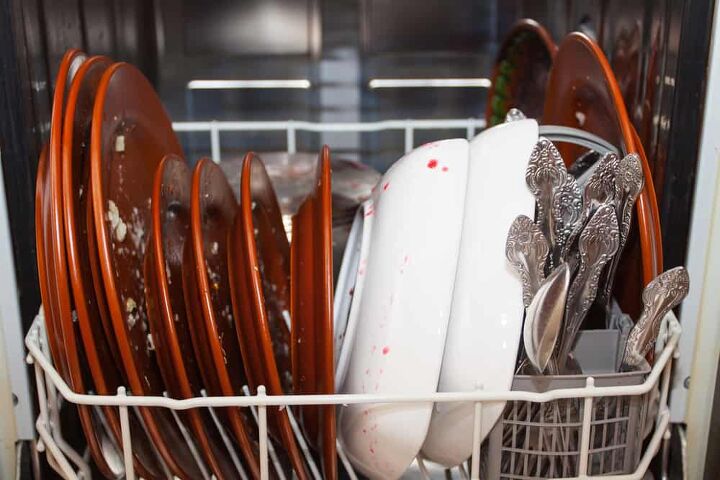






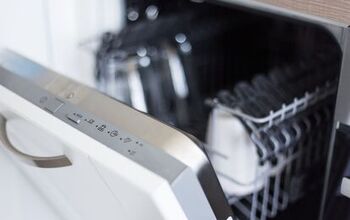
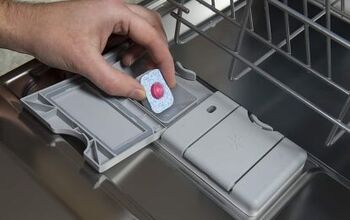
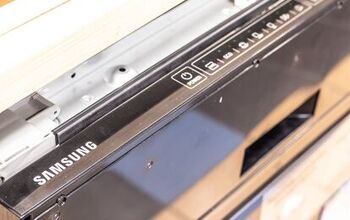





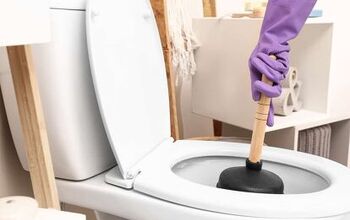

![How To Reset A Whirlpool Cabrio Washer [In 5 Easy Steps!]](https://cdn-fastly.upgradedhome.com/media/2023/07/31/9076531/how-to-reset-a-whirlpool-cabrio-washer-in-5-easy-steps.jpg?size=350x220)






